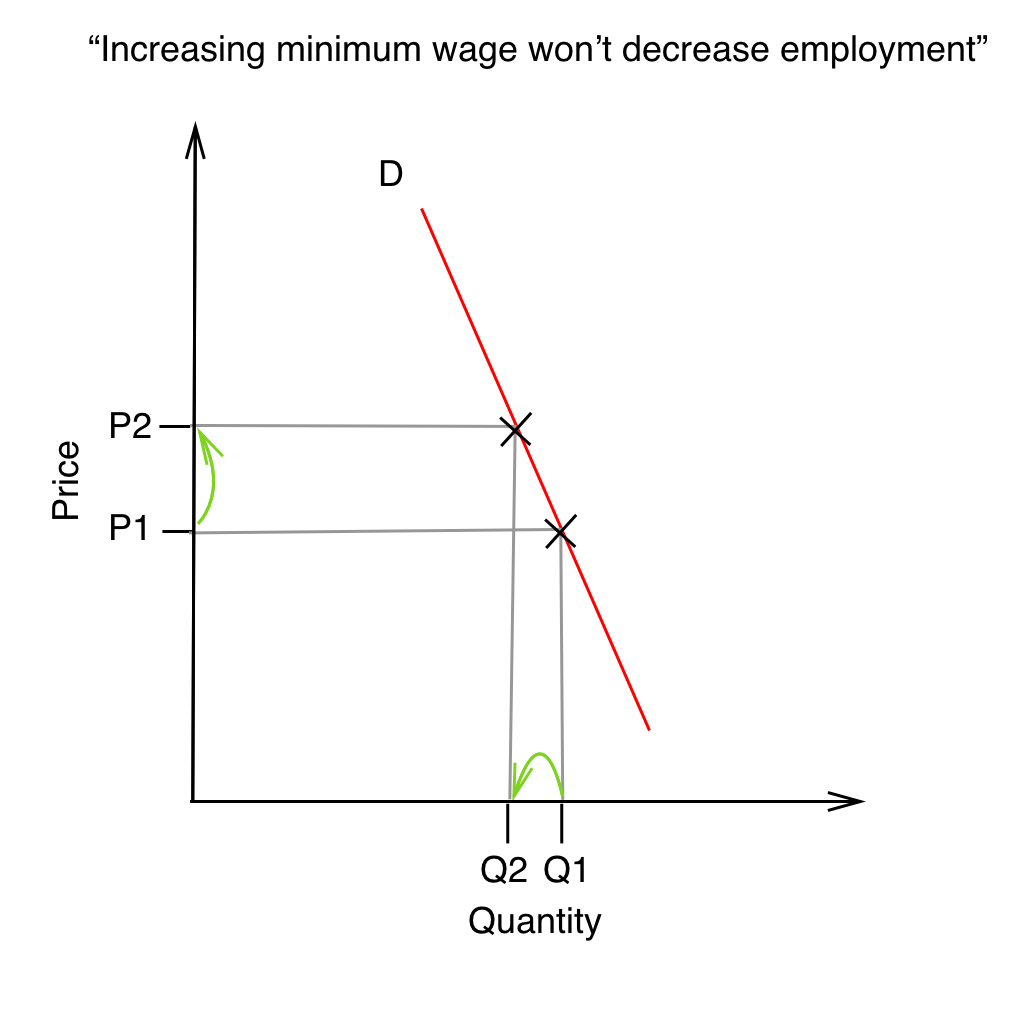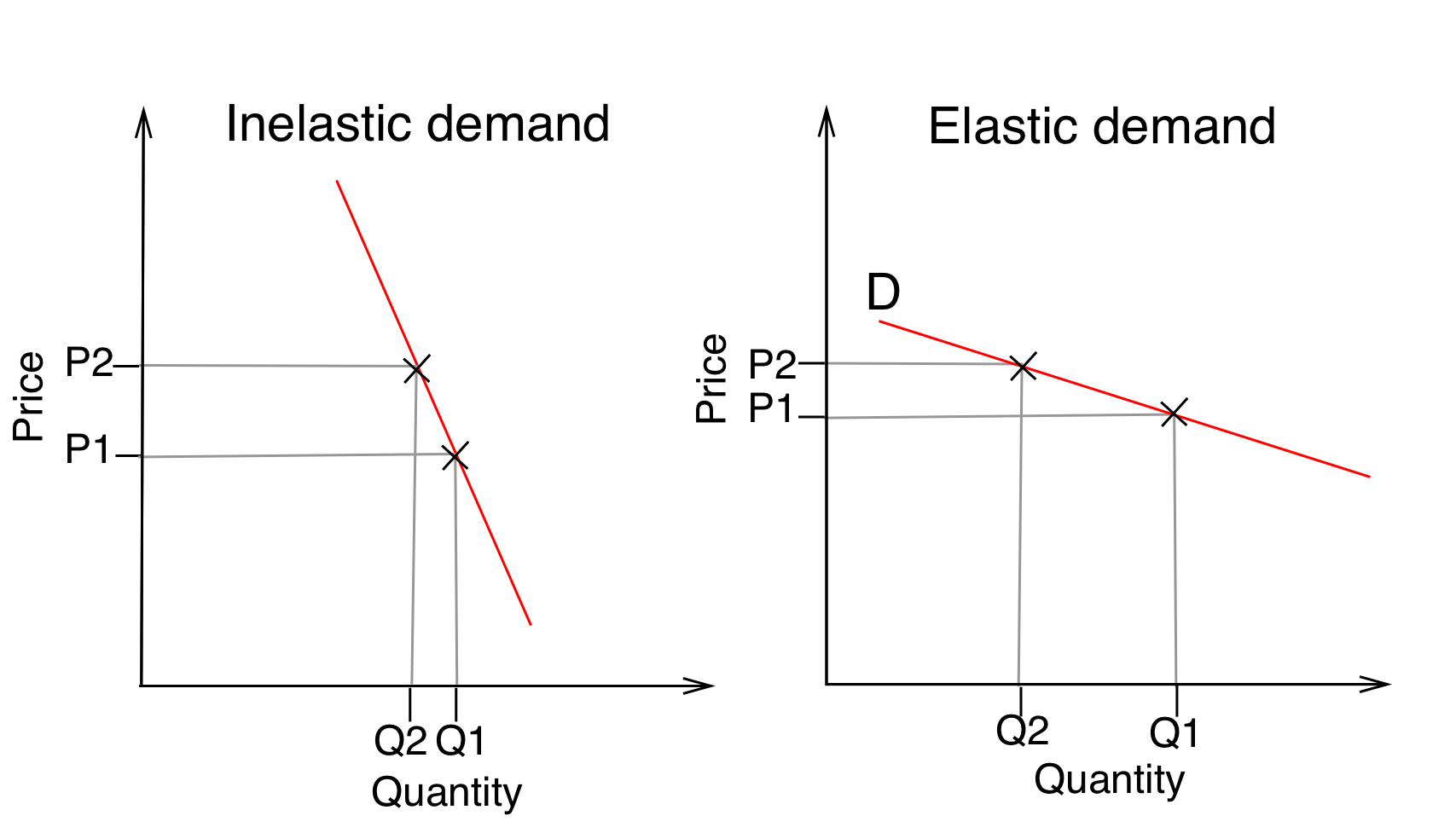Here are two claims you could make about the market for unskilled labor:
- Increasing the minimum wage won’t decrease employment among unskilled workers.
- Unskilled immigrants don’t reduce wages for unskilled natives.
I recently saw someone point out that these can’t both be true, because they imply opposite things about the shape of the demand curve. (I don’t remember where I read this. After writing this post, I found this very similar article by Bryan Caplan from 2005; possibly this whole post is just rehashing that post of his after I forgot the source.)
Here’s a diagram of a world where the first claim is true:

So the minumum wage used to be P1, then it got increased to P2. This slightly decreased the number of jobs (from Q1 to Q2), but not by very much.
This means that the demand curve for low-wage employment is inelastic.
What would things look like if the second claim were true–that unskilled immigrants don’t reduce wages for unskilled natives?

In this situation, we had a bunch of immigration, and this increased the quantity of low-skilled labor available from Q1 to Q2. (This could be represented as a shift in the supply curve, but representing it as just a shift in quantity works fine for our purposes.) This resulted in only a small decrease in wages, from P1 to P2.
If this is true, then the demand curve is highly elastic!
So these claims, interpreted naively, are contradictory.
I understand this now that someone has pointed it out, but I definitely didn’t think of it on my own. I want to notice this kind of thing automatically, just like I automatically notice the discrepancy when someone tells me that an investment is unusually high-return and also low-risk.
I think the best way for me to get good at this to mentally translate all claims about elasticity into “inelastic” or “elastic” every time I hear them. If I can tag claims by their implied elasticities, then I might be better at noticing this kind of thing.
I think the reason that I didn’t notice this is that one of the claims involves an increase in price, and the other involves an increase in quantity. So here is an enumeration of all the different things that it means for demand to be inelastic, like it was in the minimum wage case above:
- If price increases, quantity decreases a bit.
- If price decreases, quantity increases a bit.
- If quantity increases, price decreases a lot.
- If quantity decreases, price increases a lot.
And if demand is elastic:
- If price increases, quantity decreases a lot.
- If price decreases, quantity increases a lot.
- If quantity increases, price decreases a bit.
- If quantity decreases, price increases a bit.
Here are the two graphs, for reference:

I should probably make flashcards or something.
Incidentally, what’s the actual truth about the elasticity of low-skilled labor? Bryan Caplan argues convincingly that despite the famous high quality study which found that minimum wage increases didn’t cause significant unemployment in one labor market, we should probably just disbelieve that evidence. He gives more arguments here. There’s also an effect where new immigrants increase the demand for labor of unskilled workers, but we should probably a priori expect that effect to be small–as Bryan says here, “Low-skill workers only spend a tiny fraction of their income on goods produced by other low-skill workers. The same goes for every other narrow category of worker.”